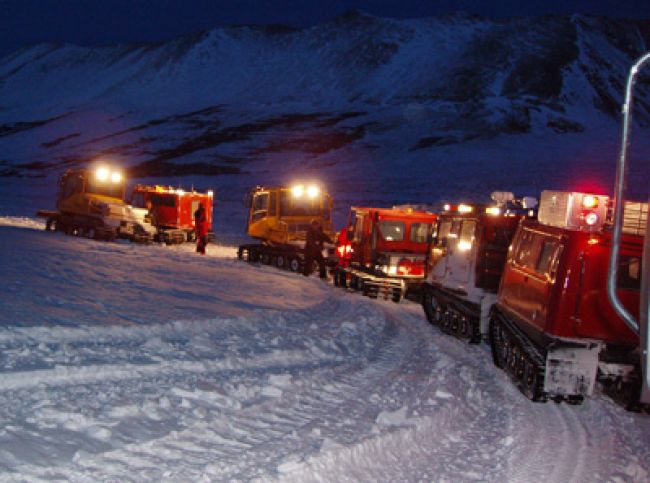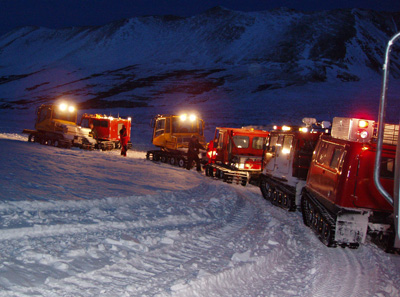
Emergency Preparedness for Remote Winter Work Locations

When utility employees travel to remote backcountry job sites, things can turn bad quickly if they are not prepared to deal with hazards. And a bad situation can become exponentially worse during the winter months, when over-the-snow travel may be involved and additional factors – such as limited or failed communications, difficult terrain, winter storms, avalanche hazards and the potential for cold weather injuries – can potentially wreak havoc.
If employees are to understand how to safely handle these types of emergency situations, employers must diligently train and equip employees well before they travel to a backcountry site. For starters, all workers must be taught how to identify a survival situation. If a problem arises on a job site, lone employees or small crews with limited resources on hand should be trained to notify their operations centers to advise them of the problem, regardless of whether or not the employees believe they can overcome the issue on their own. This is a critical step that is often overlooked. Many times workers believe that walking back to the highway vehicle is the best option if they become stranded in the backcountry due to an equipment failure or operator error. This is almost always the worst thing to do, and many deaths have been attributed to such incidents. Traveling on foot in deep snow – which is incredibly difficult, if not impossible – should be the last choice, as crew trucks should have food, water and heat to last crew members several days of the worst-case conditions.
Beyond the basics of how to identify and address a survival situation, employers should also train employees about communication protocols, survival priorities, the appropriate survival tools to bring to the backcountry, and how to recognize and avoid cold weather injuries.
Communication
A system of communication is the first thing that needs to be ensured when workers are traveling to a remote area. Workers should be required to notify a central dispatch of exactly where they are going and an estimate of when they expect to return. This way, if they become stranded, someone knows that there may be a problem and also knows the location of the workers. Even if a severe storm prohibits immediate rescue of stranded workers, responders know where to go as soon as it is safe to do so. Additionally, the sense of security this provides to stranded workers helps to prevent them from panicking or attempting to walk out of their situation, causing a risk to life and health in most cases.
Crews should be trained to think outside the box so they can overcome even the worst-case scenario. For example, crews who are in trouble have been known to purposely relay a feeder to lockout in order to send a message that attention is needed in their area. This is not the first or best choice of a communication method, but as a last resort it could save a life.
Survival Priorities
In a winter survival situation, shelter, fire, water and food are the most important items on which to focus. The order of importance of these items will vary depending on the specifics of the situation. For instance, if a worker is injured, assuring his or her well-being becomes the top priority. If starting a fire is potentially hazardous to workers due to weather or the need to travel to find materials to sustain the fire, they may decide that starting one is not worth the risk. Food is not a huge priority, but water is. It is necessary to stay hydrated, which will reduce the chances of cold weather injuries. Trying to find or make water by melting snow and ice can be hazardous, so carrying a supply of water can greatly reduce risk. It is important to note that simply putting a case of water in a toolbox on the rear deck of a snow vehicle will create 24 large ice cubes when workers actually need water. Plan to avoid this by using insulated containers or keeping water bottles inside the heated cab of the vehicle.
It is also important to ensure employees understand that the snow vehicle is the most effective shelter solution when stranded in the backcountry, even without engine heat available. If the engine is operable, carbon monoxide is the greatest hazard, and crews should be prepared to deal with this. As part of ongoing maintenance and pre-trip inspections, the vehicle’s exhaust systems should be routinely checked, and corroded or rusted joints or components should be replaced. A disposable carbon monoxide detector placed in a truck during the winter may save a life if a crew becomes stranded. Remember, carbon monoxide poisoning is not always detectable by the victims, so the detector will warn them while they still have their faculties.
Survival Tools to Carry
The size and weight of adequate survival items is an important consideration in advance of a trip to the backcountry. A crew who is traveling in a snowcat will have far less to worry about than a couple of workers who travel on snowmobiles or tracked ATVs. Fanny-pack-style bags or field vests can be handy for those workers using snowmobiles or ATVs.
Beacon locators the size of a cellphone are indispensable, and the batteries will last much longer than many portable radio repeaters.
When choosing first aid supplies, avoid preassembled kits. Gauze pads, roller bandages, tape packs and Betadine – a topical antiseptic – don’t take up much space. They can be used to treat small cuts, and they will be invaluable if a worker sustains a serious bleeding injury. Compact, lightweight ponchos or sheet shelters – which also take up little space – can be erected to help retain heat and provide cover, and they can even be seen from the air if they’re constructed of reflective high-visibility material.
In a pinch, the wilderness can provide shelter items that may help workers, such as branches that can be layered to create a shelter roof and walls. However, this option is very time- and labor-intensive as opposed to a manmade sleeping system pulled out of a survival kit. Employers should also consider the safety aspects of having employees use cutting and chopping tools in a stressful environment.
An analysis should be performed to determine which survival items will be most appropriate for the areas that employees will be traveling to. Test the items that you want to include in the survival kit to make sure they work as they should. Redundancy also is important. For example, the fire-starting section of the survival kit should have four to five ignition sources and four to five fire accelerants. If conditions are wet and certain items aren’t working, workers will have other options. Implement an annual inspection process to ensure that the kits are well stocked prior to the winter season and have not been damaged or degraded. Training is critical; in addition to carrying the items, each employee should understand how to use them.
Understanding Cold Weather Injuries
Hypothermia and frostbite are among the most common hazards workers will face in backcountry work locations. Hypothermia is the lowering of the body’s core temperature and will ultimately lead to death if not properly corrected. It also is important to note that improper recognition and treatment of hypothermia is a common cause of backcountry deaths. Stage one hypothermia is not a major concern, and anyone who has felt cold and shivered has experienced this. The easy answer to treatment is that if you feel cold, get warm in any safe manner that you can. The more serious hazard occurs when a person enters stage two hypothermia and then stage three. Bad decision-making and poor judgment may be displayed as the condition worsens, and co-workers need to recognize these symptoms in each other before the event becomes irreversible. Stage three hypothermia essentially involves a state of unconsciousness, and there is no chance of self-rescue at this point. Frostbite also is at increased risk due to the body’s attempt to preserve internal heat by shunting blood away from extremities to the core. As blood flow is reduced to extremities, skin cells may freeze and die. Good clothing systems, spare clothing and specific training go a long way toward reducing risk in this area.
Avoiding Survival Situations
Employers need to establish criteria for what is considered a go or no-go mission. If the task is deemed important enough to send workers to a remote backcountry location, those workers must be prepared for a survival situation. Provide them with the best tools and verify that they know how to use them. Ensure that the vehicles employees use to travel over snow are properly inspected and maintained per manufacturer recommendations. Mechanical breakdowns are among the leading causes for survival situations. In many cases, a five minute pre-trip inspection would have identified a problem that left a crew of workers stranded on a mountaintop for several days. Checklists and equipment-specific training for workers can be very beneficial in reducing this risk.
Employers operating in areas impacted by snow, ice and low temperatures should place great emphasis on this topic in their safety programs. Although winter only lasts a few months, it can quickly create a dangerous situation if proper precautions are not taken.
About the Author: Todd Horning is the general manager for Safety One Training Inc. (www.safetyoneinc.com), an internationally recognized company specializing in safety training and equipment programs for electric utilities, telecoms and numerous government agencies. In addition, Horning serves as a senior instructor in the company’s Snowcat and Winter Survival divisions. Art Seely and Ty Fenton of Safety One Training Inc. also contributed to this article.

